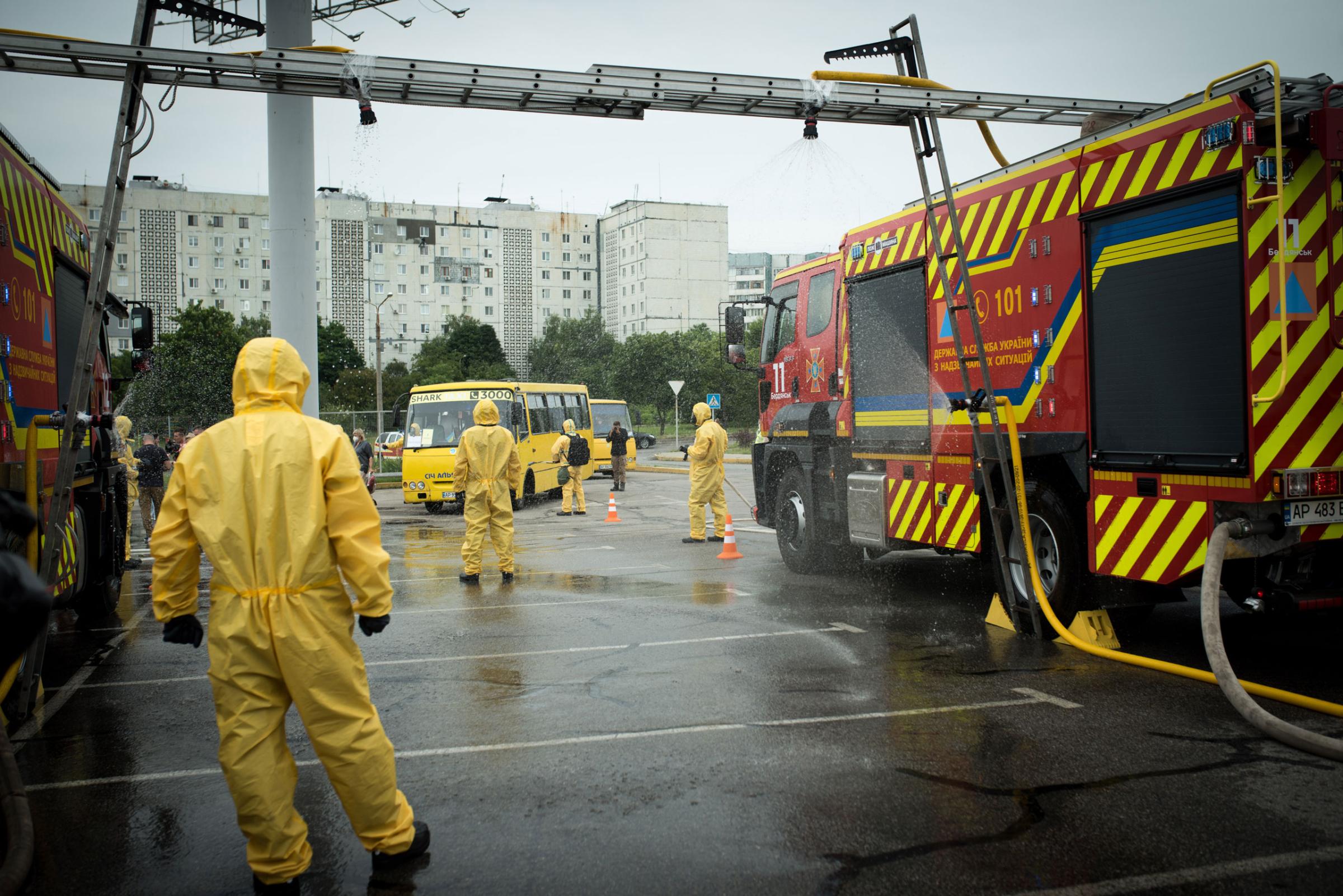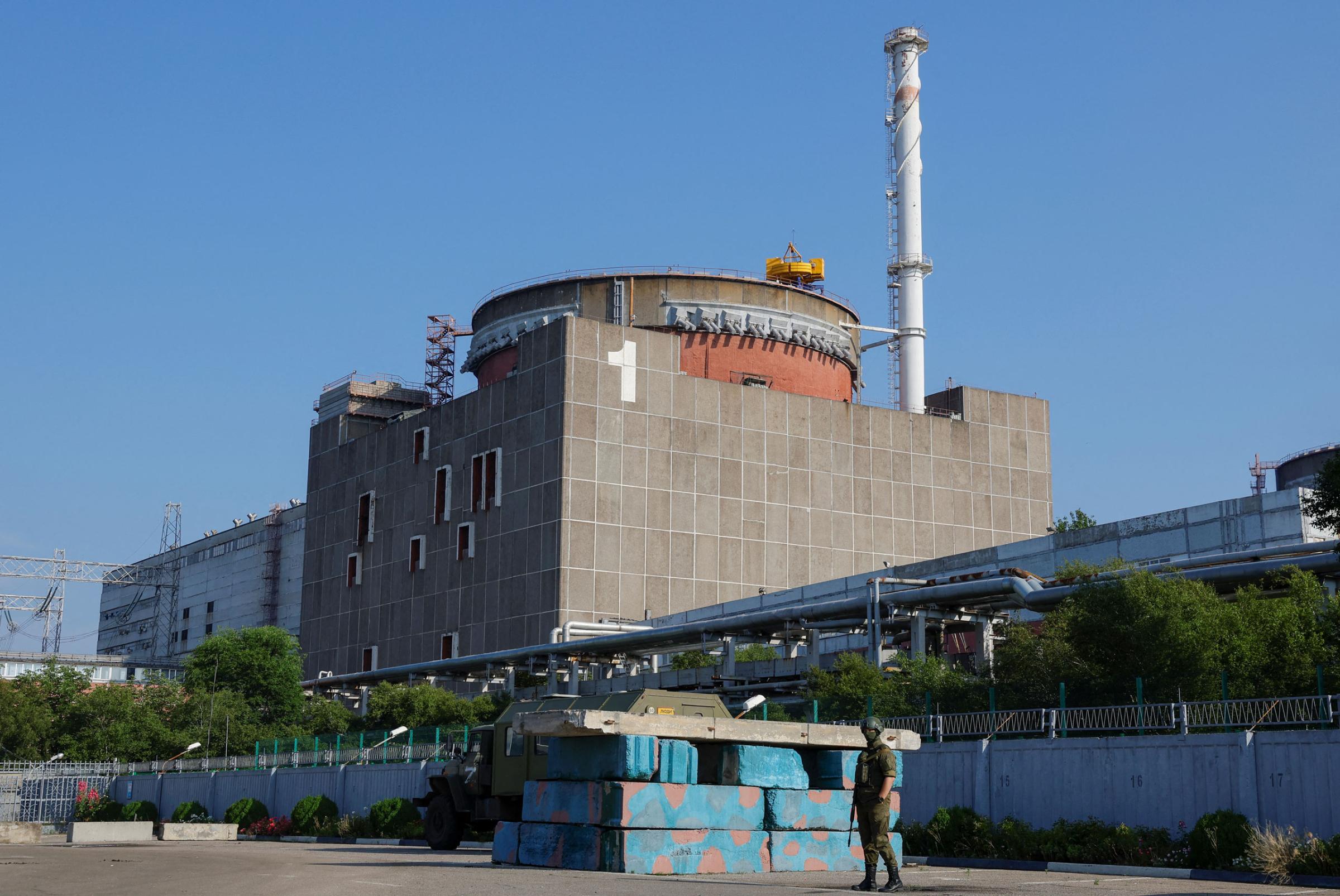As Ukraine makes slow gains along the southern front in its war against Russia, the government in Kyiv has begun preparing for Russian forces to sabotage the nuclear power plant they occupied at the start of the invasion, the country’s energy minister told TIME in an interview.
The nuclear plant, Europe’s largest, sits on the front lines in the southern region of Zaporizhzhia, less than 100 miles from a cluster of villages Ukraine has managed to claw back from Russian control in recent weeks. If Ukraine succeeds in retaking the plant and driving the Russians away from the region, “I do not believe that they would leave the station operational,” said Minister German Galushchenko. “They could do a lot of damage, so much damage that it would be very difficult for us to operate the station.”

Since early June, all six of the plant’s nuclear reactors have been placed into a cold shutdown, suspending the production of electricity and reducing the risk of an accident that could release large amounts of radiation. The plant’s engineers took that precaution soon after the rupture of a nearby dam caused catastrophic flooding and threatened the supply of water needed to cool the reactors. Russian forces were in control of the dam at the time, and mounting evidence suggests they blew it up, according to an investigation by the New York Times.
The destruction of that dam, in the occupied town of Nova Kakhovka, dimmed hopes among Ukrainian authorities that Russia might leave the nuclear power plant unscathed, Galushchenko said. After traveling to parts of Ukraine that have been liberated from Russian occupation, “I can tell you that when they leave, when they run from there, they mine almost everything in the energy infrastructure,” said the energy minister. “You cannot imagine the level of this mining. It’s millions, millions of mines, even in small villages.”
Volodymyr Zelensky, the President of Ukraine, warned in early July that Russian forces had placed “objects resembling explosives” on the roofs of several buildings at the plant. Citing Ukrainian intelligence agencies, he suggested the Russians could be trying to “simulate an attack on the plant.” Two days later, satellite imagery of the facility showed that white objects had recently appeared on the roof. Independent experts said it was not possible to identify the white objects in the photos without a full onsite inspection.
Russia has blamed Ukraine for endangering the nuclear facility through military operations aimed at ending the Russian occupation. For nearly a year, officials from the U.N.’s nuclear watchdog, the International Atomic Energy Agency, have been allowed to visit the occupied plant and conduct limited inspections under the watch of Russian military forces. The U.N. inspectors have repeatedly observed mines around the plant, most recently in July, when the agency reported seeing “directional anti-personnel mines on the periphery” of the facility. Rafael Grossi, the general director of the IAEA, said in a statement at the time that the presence of explosives is ”inconsistent” with the agency’s safety standards. But the detonation of the mines, he added, “should not affect” the security systems designed to prevent a nuclear incident.

Even if such explosions do not result in the release of radiation, Galushchenko said they could render the plant inoperable for years to come. “If they explode the roof,” he said, “it would create huge problems for us in restarting the operation” of the plant once it is liberated. Ukraine is therefore preparing alternative sources of energy production. During a trip with Zelensky to the European Union in July, Galushchenko and other officials pursued a deal for Ukraine to purchase two Russian-made nuclear reactors from Bulgaria, an E.U. member.
The Wall Street Journal reported at the time that the deal was nearing completion, with an estimated price tag of around $650 million. Asked about the deal, Galushchenko told TIME that financing could come from a mix of sources, including U.S. and European aid to Ukraine and loans from foreign banks. But the purchase of the reactors from Bulgaria would not be a quick fix, he warned. Once they are delivered to Ukraine, it would take engineers at least two years to install the reactors and bring them into operation at another one of Ukraine’s nuclear power plants, in the region of Khmelnitsky.
As for the nuclear facility now under occupation, fixing the damage Ukraine expects from Russian sabotage could take far longer than that, he said.
More Must-Reads from TIME
- Donald Trump Is TIME's 2024 Person of the Year
- Why We Chose Trump as Person of the Year
- Is Intermittent Fasting Good or Bad for You?
- The 100 Must-Read Books of 2024
- The 20 Best Christmas TV Episodes
- Column: If Optimism Feels Ridiculous Now, Try Hope
- The Future of Climate Action Is Trade Policy
- Merle Bombardieri Is Helping People Make the Baby Decision
Contact us at letters@time.com